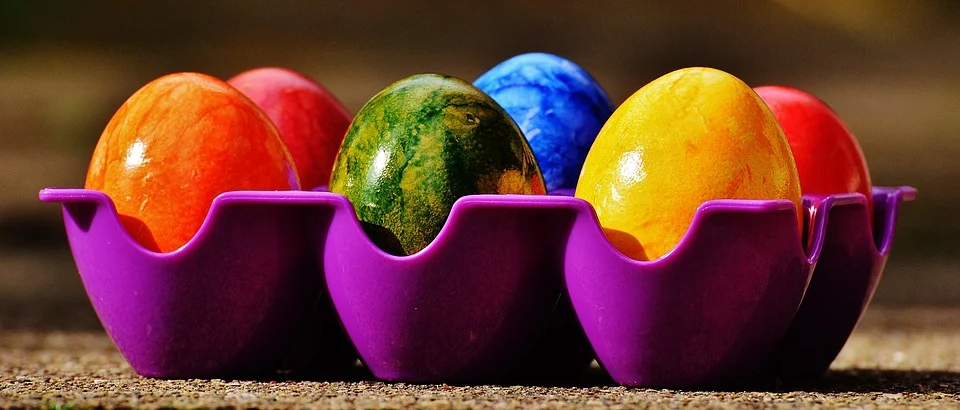 Pastel-colored Easter eggs, decadent chocolate bunnies, Sunday brunch – no matter how you celebrate, the anticipated Easter holiday is quickly approaching. While Easter is a great way to bring families together and let kids’ imaginations run wild, the tasty holiday can also bring an often ignored guest with a lasting impact: waste.
Pastel-colored Easter eggs, decadent chocolate bunnies, Sunday brunch – no matter how you celebrate, the anticipated Easter holiday is quickly approaching. While Easter is a great way to bring families together and let kids’ imaginations run wild, the tasty holiday can also bring an often ignored guest with a lasting impact: waste.
Easter egg hunting at a cost
Did you know that packaging can make up a quarter of a chocolate Easter egg’s weight? In fact, a recent study revealed that a Lindt Lindor Milk Chocolate Egg – commonly sold at Fred Meyer and Safeway – contains 28.1% in packaging.
Then there are the plastic Easter eggs…
It is no secret that plastics are a notorious foe of Mother Earth. Since the material does not easily break down, plastic can take several hundred years to decompose in a landfill. In other words: those plastic eggs you hide in your home or backyard will likely still be decomposing in your local landfill several generations from now.
Other Easter traditions like Easter baskets with plastic grass, packaged chocolate bunnies, and decorations can also carry lasting effects on the environment.
Easter Can Be Eco-Friendly
Easter does not have to be wasteful in order to be fun for you and your family. While it may require some creativity, creating a holiday with a low carbon footprint is not as daunting as it may seem. Here are some helpful tips to make it a little easier.
Get Back to the Basics
Before the convenience of plastic Easter eggs entered our world – and before Americans became sugar addicts – Easter eggs were made the old-fashioned way: with real eggs.
The tradition of Easter eggs dates back to as early as the 13th century, possibly as a pagan celebration of the new life of spring, according to some historians. Chocolate Easter eggs were not even invented until the 19th century.
To make your Easter eggs eco-friendly, use real, hard-boiled eggs that you can peel later and eat. If you desire to color your eggs, opt for a non-toxic egg dye – and make sure to use the shells for composting. To learn how to compost eggshells for your garden, click here.
Plastic Egg Swaps
If you prefer reusable eggs so you can hide dollar bills and other prizes in them for kids, consider making a conscious swap from plastic. You can use biodegradable and reusable eggs instead. Eco Eggs like the ones found here are not only plastic-free, but made from a compostable blend of upcycled newspaper and rice paste, and can be used repeatedly. Wooden eggs, like this 8-piece set, are also great for decorating with the kids.
When You Just Need Some Chocolate…
If you simply cannot resist the craving for a chocolate Easter bunny, you can still be eco-conscious while you enjoy your treat. Instead of purchasing a store-bought bunny with an enormous amount of packaging, consider making your own Easter bunny at home.
You can acquire a reusable chocolate bunny mold and melt your favorite kind of chocolate; just wash the mold afterwards and use it again next year. For a step-by-step guide to making your own chocolate bunny, click here.
Note: A similar tactic can be applied for chocolate Easter eggs as well.
Grass That is Actually “Green”
Typical Easter basket grass is made up of plastic and is just as bad for the environment as your plastic eggs. If you are one of those people who loves giving gifts stuffed in a grass-filled basket on Easter, not to worry. There are plenty of eco-friendly grass options out there that are made from recycled materials, like this bundle of shredded colorful print paper, so you can rest easy knowing this grass is also easy on the earth.
By: Rebekah Harcrow
Do you have a story for The Advocate? Email editor@corvallisadvocate.com

